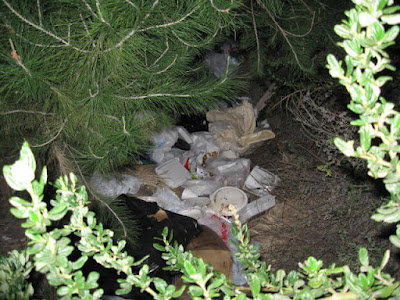 CityWatch, May 1, 2009
CityWatch, May 1, 2009Vol 7 Issue 35
LA's Transportation Commission just approved three more speed limit increases in the San Fernando Valley, this time for Roscoe Boulevard, Sherman Way, and Tampa Avenue.
The proposals were on the Board's consent agenda, meaning they would have passed without discussion but for the fact that a member of the community showed up to object.
Two of the newest Commissioners, Jaime J. Rodriguez and Grace E. Yoo, both voted against the proposed speed limit proposals, indicating they would like more information.
Stephanie M. Rodriguez, John Frierson, and Board President George E. Moss all voted for the proposed increases which left D. Malcolm Carson in position to defeat the proposals or to affirm the increases.
Carson gave a fairly comprehensive speech agreeing with the many objections to the speed limit increases including the need to consider the safety of pedestrians and cyclists when raising speed limits. He also agreed that LA should consider other mitigation techniques such as road diets, traffic calming, and other complete streets tolls, all of which looked like he was going to vote against the proposals.
Then he reversed his position saying so much time had been invested in the proposals that he didn't want to stand in the way, an explanation he also used last time when he approved another round of speed limit proposals in the West Valley.
The fact that two of the commissioners would want more information on the State's "Speed Trap" law, the need to reconcile the speed limit with the prevailing speed in order to use radar and laser, and other options for facilitating compliance with the 85% rule should speak volumes in terms of the need for a public conversation on speed limits in our communities.
Department of Transportation’s Assistant GM, John Fisher, instead defers on the community's desire to get involved in the establishment of speed limits by saying "As we all know, the setting of radar-enforceable speed limits can become a very emotional issue."
The recent spike in pedestrian deaths on the streets of LA indicates that fear is a very rational response and the LADOT's failing to consider the people who live on the affected streets, walk on the affected streets and ride bikes on the affected streets is a failure to serve the needs of the community.
Deputy City Attorney Shelley Smith demonstrated the need for public participation when she advised the new Commissioners on the proposed speed limits. Smith positions the speed limit increases as a simple vote for or against radar enforcement. She has been contradicted on this point in the past by then-Commissioner Andrea Alarcon and this time by Commissioner Carson but Smith continues. Having prepared the Municipal Code amendments that are on the table, one might question her objectivity when advising the Board on how to vote.
The discussion over speed limit increases should never turn into a debate over the use of radar or laser speed limit enforcement. In fact, this entire debate is borne from a desire to put the most effective law enforcement tools in the hands of the LAPD. At issue is the hasty, uninspired and lazy rush to simply raise the speed limits rather than to explore the other options.
Here are the issues:
1) The community must be involved from the beginning of the process. Speed limit certifications are expiring every year. The community should know what is coming up and how many streets are currently expired and not eligible for radar/laser enforcement. (some have been expired for years so to refer to people who fight the speed limit
increases as obstructionists is disingenuous)
2) The process should always start with a conversation of the full tool-box of mitigation tools, from bulb-outs to safety islands, diagonal parking to bike lanes, speed tables to stop signs, traffic calming to road diets. These options must be explored first and in every instance, speed limit increases must be positioned as a last resort and with the full participation of the community.
This past year the City of Los Angeles approved approximately 20 speed limit increases and is prepared to process another dozen.
Meanwhile traffic engineers, law enforcement agencies and communities throughout the state are working to revise the "speed trap" law and to give local communities more control over their streets.
It's time for the people of the largest City in the most populated State in the most powerful Country in the world to work together to take a leadership role in developing Safe Streets for everybody. (Stephen Box is a transportation and cyclist advocate and a CityWatch contributor. He can be reached at Stephen@ThirdEyeCreative.net)

























